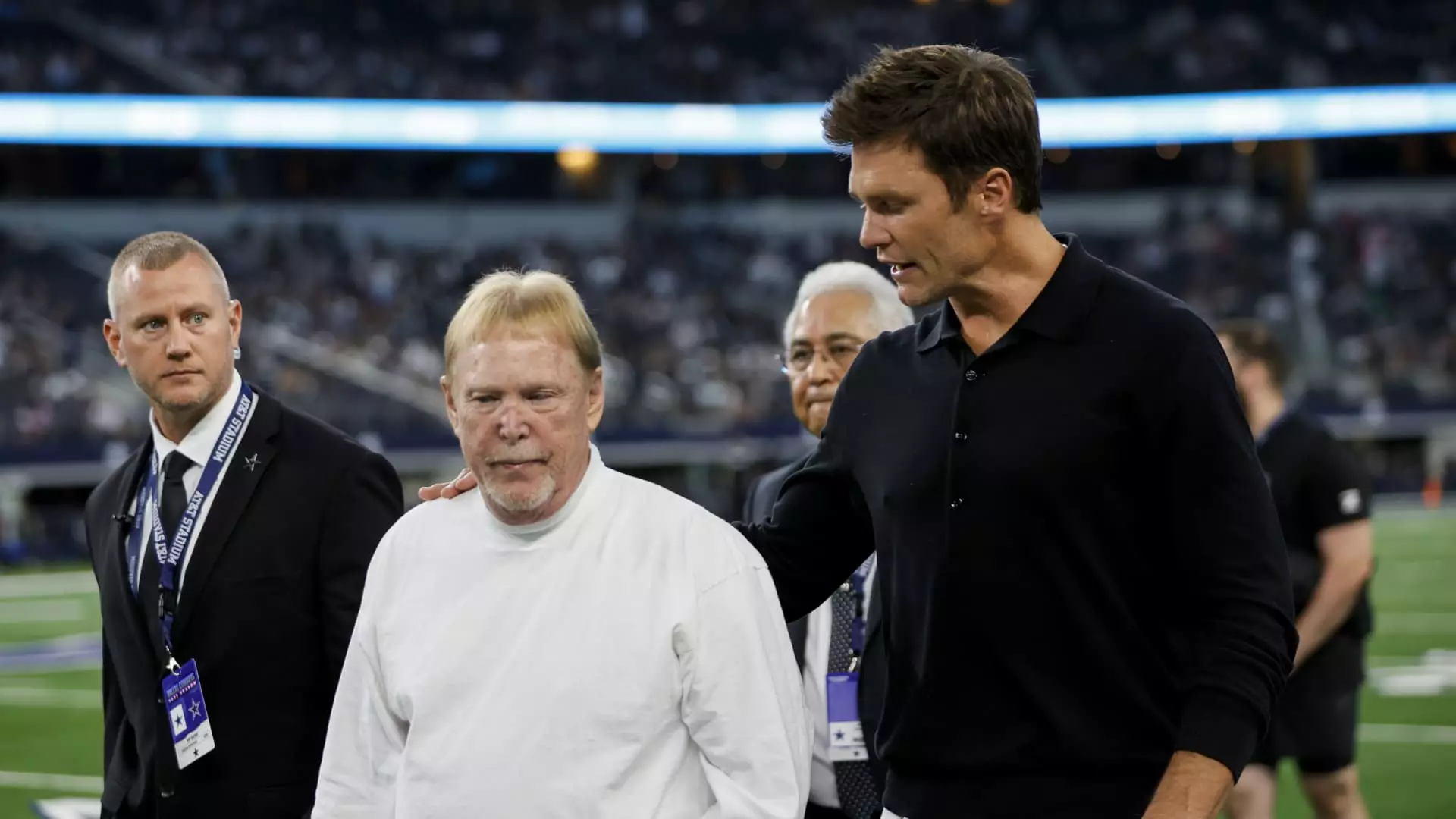The recent approval of Tom Brady as a minority owner of the Las Vegas Raiders marks a significant milestone not just for the former professional athlete but for the broader narrative of athlete participation in team ownership. This article aims to dissect the implications of this development, analyze the financial aspects surrounding Brady’s investment, and explore the evolving landscape of sports ownership as it relates to former players.
On Tuesday, NFL team owners greenlit Brady’s 10% stake acquisition in the Raiders, showcasing a growing trend where elite athletes transition from playing on the field to owning a portion of the franchise. Teaming up with Tom Wagner, the founder of Knighthead Capital, Brady is diving into the pigskin world post-retirement, investing approximately $220 million as part of a partnership valued at around $3.5 billion. The significance of this deal cannot be overstated; it positions Brady among a unique echelon of athletes who are not merely onlookers but influential stakeholders in professional sports organizations.
However, it’s crucial to acknowledge that this investment came at a cost. Brady and Wagner faced a 10% “flip tax,” a figure that will be redistributed to the other 31 NFL team owners. Such taxes may initially seem punitive but frequently serve to cement unity among owners, whose profits are woven together through their collective success in the league.
While Brady and Wagner are acquiring a prestigious slice of NFL real estate, the valuation details reveal a paradox. CNBC’s 2024 NFL Team Valuations present the Raiders as the fifth-most valuable franchise with a staggering $7.8 billion valuation. However, Brady’s purchase appears to come with over a 50% discount, a relatively uncommon occurrence in the world of sports acquirers. Given the anticipated discounts for limited partners—typically ranging from 20% to 25%—this stark difference raises questions about the perceived value of the franchise and market conditions influencing ownership stakes.
The valuation also highlights how, since relocating to Las Vegas, the Raiders have experienced exponential growth in revenue and brand recognition, underscoring the lucrative potential of investing in an NFL team. The Raiders reported revenue figures of $780 million in 2023, with a significant portion stemming from their high-ticket prices—reflecting their ability to leverage the allure of Las Vegas to command premium pricing.
Becoming a team owner, however, is not without its challenges. Despite his celebrated sports legacy, Brady is subject to strict ownership guidelines that restrict his involvement. While he may attend games as an owner, he cannot partake in team-related activities like production meetings or access to player and coach interactions. These limitations spark discussions in the sports community about the boundaries between ownership and active engagement, particularly for former players seeking to maintain their public personas.
Brady’s simultaneous commitment to a 10-year, $375 million broadcasting contract with Fox Sports further complicates his dual role. The restrictions imposed by the NFL on his coverage and involvements raise pivotal questions about the potential conflicts of interest and how they could reshape the dynamic between ownership and depiction of the franchise.
Brady’s investment is part of a broader trend wherein former athletes are acquiring ownership stakes in teams. Joining the ranks of only a handful of former NFL players to delve into ownership, Brady’s entry symbolizes a fundamental shift in how athletes view their post-competition careers. The synergistic combination of financial acumen and a deep understanding of sports culture provides these former players with unique insights into the operational dynamics of professional teams, positioning them to potentially bring about positive changes.
Additionally, his involvement with the WNBA’s Las Vegas Aces underscores the diversity of sports interests that current football players may pursue. With sports ownership avenues expanding, Brady’s actions could inspire a new generation of athletes to realize their potential beyond the field, blending personal branding with business acumen.
Tom Brady’s move into NFL ownership represents much more than just a financial transaction; it signifies the evolving landscape of sports and ownership models. As the line between athlete and owner blurs, we witness the intriguing possibility of a new era in sports where former players can leverage their experiences for the future growth of franchises. The ramifications of these changes remain to be seen but may ultimately redefine team dynamics in ways that benefit not only owners but also fans and communities alike. With Brady at the helm, the Raiders are poised to navigate an exciting, albeit challenging, trajectory in the NFL universe.

